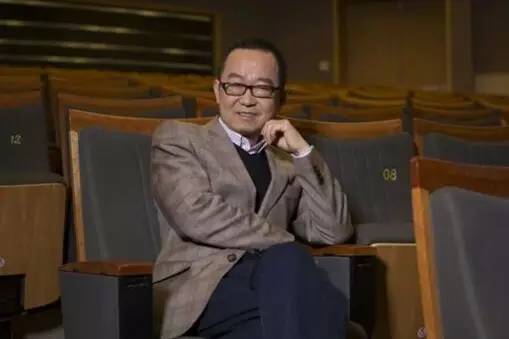
张军教授
复旦发展研究院副院长
复旦大学经济学院院长
上个月在北京召开的中共十九大备受海内外的关注。五年一届的党代会通常要做出两个最重要的决定,而这些决定常常可以回答一系列关乎中国发展未来的重大疑问。大会的使命一是决定党的最高领导人和领导集体(政治局常委);二是决定中国未来一段时间的发展方向并绘制蓝图。
国家主席习近平在中共十九大上再次当选为中共的最高领导人,也巩固了习近平作为核心的中共的绝对领导地位。“党是领导一切的”提法写入了《党章》。写入《党章》的还包括了习关于“新时代”的思想。在中国国内,“习核心”的确立常常也被理解为推进至上而下改革的政治保障。
中共十九大上决定的另一项议程是关于中国未来的发展蓝图和任务。十九大报告改变了中共延续30年的对中国基本国情和“主要矛盾”的表述。在1987年10月召开的中共十三大上,中国面临的“主要矛盾”被描述成“人民日益增长的物质文化需要同落后的社会生产之间的矛盾。” 基于那时的国情,十三大把解决温饱问题和奔向小康当作经济发展的首要任务。30年后,温饱和奔向小康目标已经提前实现。而今天的主要矛盾—按照十九大报告的说法--已经转化为“人民日益增长的美好生活需要和不平衡不充分的发展之间的矛盾。”
习近平在本届十九大的报告中说,中国人民生活的目标已经从解决温饱、奔小康,转向追求更美好的生活。从现在到2020年,是全面建成小康社会决胜期。而全面建成小康社会,是中共确定的第一个“百年目标”(中国共产党于1921年在上海成立),也被认为是实现中华民族伟大复兴的关键一步。
在此基础上,中共十九大绘制了2020-2050年的宏伟发展目标和“两步走”的线路图: 第一步是,从2020年到2035年,在全面建成小康社会的基础上,再奋斗15年,基本实现社会主义现代化。到那时,经济实力、科技实力将大幅跃升,跻身创新型国家前列;人民生活更为宽裕,中等收入群体比例明显提高,城乡区域发展差距和居民生活水平差距显著缩小,基本公共服务均等化基本实现,全体人民共同富裕迈出坚实步伐;生态环境根本好转,美丽中国目标基本实现。
从2020年到2050年是第二步。在基本实现现代化的基础上,再奋斗15年,把中国建成富强民主文明和谐美丽的社会主义现代化强国。那时,物质文明、政治文明、精神文明、社会文明、生态文明将全面提升,实现国家治理体系和治理能力现代化,成为具有强大综合国力和国际影响力的先进国家。走完这个第二步,就实现了中共预设的另一个“百年目标”--到2049年,中华人民共和国建国整整一百年。
对经历改革开放40年后的中国经济的基本阶段做出恰如其分的评估是中国“两个百年目标”的设想和本次十九大描绘中国未来30年发展蓝图的前提。非常重要的一点是,中共坦诚中国依然并将长期处于“社会主义的初级阶段”。这为中共十九大之后政府落实未来30年的蓝图提供了巨大的想象空间。中国不可能改变需要在经济、社会和政治等方面持续保持发展动力和提升水准的大趋势。习近平在十九大的报告中坦言,发展是解决中国一切问题的基础和关键。
为了构造这一发展的大趋势,在十九大报告中,中国最高领导人承诺继续推进结构性改革和推动形成全面开放新格局。中国承认在经济市场化程度方面的不足并在未来致力于结构性改革。在2013年举行的党的全会上,中共把“让市场在资源配置中发挥决定性作用”写入了决议,并承诺致力于供给侧结构改革。兑现这些承诺让有力保护私人财产不受侵犯和维护企业家精神的活跃变得极其必要和重要。以下数字也足以支持中国有足够的理由和必要致力于对私产和企业家精神的保护:私人企业用近40%的资源创造了60%以上的GDP、50%以上的税收、70%以上的技术创新和新产品开发,以及80%以上的就业岗位。在增量上,资本的积累更多地发生在民间部门而不是国有部门。
在开放方面,中国承诺实行高水平的贸易和投资自由化便利化政策,全面实行准入前国民待遇加负面清单管理制度,大幅度放宽市场准入,扩大服务业对外开放,保护外商投资合法权益。凡是在中国境内注册的企业,都要一视同仁、平等对待。赋予自由贸易试验区更大改革自主权,并在中国的一些适当地方探索建设自由贸易港。
毋庸置疑,在没有改变的“初级阶段”之下,中国要能够保持持续的发展和增长的动力,还必须面对过去40年来(明年将是中国经济改革和开放的四十周年)已经发生变化的内部和外部条件并能妥善处理时刻可能爆发的各种潜在风险或把风险调整到可控的水平之内,尽管中国过去40年成功地做到了这些。
挑战之一是中国面临居高不下的收入不平等。中国收入分配的基尼系数从1983年的0.283一度上升至2008年的峰值0.491(根据中国家庭金融调查数据(CHFS)测算,中国2010年和2012年基尼系数分别为0.61和0.60,明显高于官方公布的0.481和0.474)。虽然2008年之后中国的基尼系数7年连续下降至0.462,但这一数据仍然高于国际警戒线,更高于主要发达国家0.24-0.36的区间值,不仅如此,由于低收入者养老金收入增速放缓和以生产粮食为主业的农民收入下降,中国的基尼系数2016年又回升至0.465。
如果考虑实物性收入和补贴,中国可能也是世界上城乡收入差距最大的国家之一。同时,居民的收入差距的扩大也发生在城镇内部。2014年收入最高的5%的家庭人均年收入高达53300元,而收入最低的5%的家庭人均年收入仅为1600元,两者相差33倍。
20年来,与居民收入差距相比,中国还面临越来越严重的居民财产的差距。1988年和1995年全国居民财产分配基尼系数分别为0.34和0.4,小于那时的收入分配差距。而到2010年,中国居民财产分配基尼系数达到了0.739的峰值。截至2014年,底端25%的家庭拥有的财产总量不足1%,而顶端1%的家庭拥有全国近三分之一的财产。
可见中国走向未来30年的道路并不平坦。如果依照过去的表现来推算,中国具有极大的可能在2035年进入高收入的国家行列,这意味着中国在未来15-20年要确保平均每年5%或更高的劳动生产率的增长。而上升过快的收入不均和财富的分化对于十九大绘制的和谐而美丽的蓝图而言是非常不利的潜在风险和妨碍因素。世界上绝大多数国家未能解决好增长与收入分配出扩大之间的冲突。中国需要更加智慧地处理经济增长和收入分配不均这两个目标的冲突。
最后,也许有必要从人口学的视角展望一下30年后的中国。30年后,即便中国能顺利实现中共十九大绘制的蓝图,进入到高收入和先进国家的行列,但似乎没有什么可以阻止中国在人口转变上的快速步伐。中国那时将极有可能变成一个严重老龄化的社会。
根据联合国发布的2015年修订版的世界人口展望报告预测,到2050年36.5%的中国人在60岁以上,人口老龄化程度高于多数发达国家。2015年,有一半中国人的年龄小于37岁。但到2050年,尽管那时的总人口跟今天持平,约为13.8亿左右,但0-14岁的儿童人口比例将低至13.5%,仅比日本高一个百分点;人口年龄中位数将高达49.6岁,接近日本53.3岁的水平,而瑞典、英国、美国欧美国家依然才40岁出头。
Achieving the lofty development goals China's leaders have set will not be easy. But with a clear development blueprint and a powerful leader whose political clout all but guarantees continued reform, the country seems to be in a strong position to sustain its unprecedented economic success in the coming decades.
Every five years, the Communist Party of China convenes a National Congress, where two key decisions are made: who will lead China for the next five years, and what path to development those leaders will follow. The CPC's recently completed 19th National Congress did all that and more.
Beyond choosing the next Politburo Standing Committee, the 19th Party Congress reelected President Xi Jinping as the CCP's leader and added his eponymous ideology – “Xi Jinping Thought” – to the Party's charter. The Congress also produced a blueprint for the country's future development until 2050, one that reflects the changes that economic reform and opening have brought to China.
At the CPC's 13th National Congress, in October 1987, China's leaders declared that the “major contradictions” facing the country were those between “people's growing material and cultural needs and the backwardness of social production.” In other words, the key challenge was to produce enough food, clothing, and books for all Chinese.
Thirty years later, the major contradiction China faces is that between “rising demand for higher standards of living and the constraints imposed by insufficient and unbalanced economic development.” In his address to the 19th Party Congress, Xi declared that, because China can largely deliver basic necessities to its people, the goal now should be to improve their quality of life.
With that in mind, the 19th Congress charted a new roadmap, based on the “two centennial goals” inherited from the 18th Congress. The first centennial goal is to build a “moderately prosperous society” (xiao-kang) by 2021, the 100th anniversary of the CPC's founding. The key here is to ensure broad prosperity, with poverty all but eliminated.
The second centennial goal is to transform China into a “fully developed and advanced nation” by 2049, the 100th anniversary of the founding of the People's Republic. The vision, confirmed at the Congress, is for China to be a prosperous, civilized, harmonious, and modern socialist society, boasting strong governance. Such a China would be a leading global power, ranking high among the advanced economies.
The 19th Party Congress went some way toward marking the path between these two goals, asserting that once the first centennial goal is realized, China's next task will be to modernize Chinese society by 2035. Such a modern China would be a world leader in innovation, with a clean environment, a large middle class, and a much narrower gap between rural and urban growth, public services, and living standards.
Achieving these goals will require, first and foremost, that China's leadership understands where in the development process China is. In this sense, it is promising that China's leaders admitted at the latest Congress that China is and will remain in the primary phase of socialism. China must, therefore, put development first, with the expectation that economic growth will solve the country's problems.
Given this, China's top leaders promised that they would continue implementing structural reforms and advancing economic liberalization. This builds on a resolution, adopted at the Third Plenary Session of the 18th CPC Central Committee in 2013, to give the market the “decisive role” in allocating resources.
As the 19th Party Congress acknowledged, honoring these commitments will require China to protect private property rights and entrepreneurship. The importance of this is highlighted by the fact that the private sector contributes more than 60% of China's GDP, 50% of its taxes, 70% of its technological and product innovations, and 80% of its jobs, despite accounting for less than 40% of inputs.
As for liberalization, China is committed to implementing policies to open up further its markets to trade and foreign investment, while protecting the legitimate rights and interests of foreign investors. As part of this effort, the government is authorizing further free-trade zones, and exploring the possibility of free-trade ports in selected locations.
It is believed that China is on track to achieve its goal of becoming a high-income economy by 2035. But it will have to sustain labor productivity growth of at least 5% annually for the next 15-20 years – an outcome that will depend on rising urbanization and deepening technological progress.
The key to success will be a Chinese leadership that adapts effectively to changing internal and external conditions and manages the risks that have accumulated in recent decades. For example, it must tackle growing income inequality, driven largely by the massive disparity between urban and rural incomes, though the income gap among urban residents is also widening. In 2014, per capita income was CN¥53,300 ($8,024) for the top 5% households and just CN¥1,600 for the poorest 5%.
According to China Household Financial Survey data, China's Gini coefficient – the most common measure of inequality – climbed from 0.283 in 1983 to 0.491 in 2008, reaching highs of 0.61 in 2010 and 0.60 in 2012 (much higher than the official figures of 0.481 and 0.474, respectively). Though the Gini coefficient dropped to 0.465 by 2016, that still exceeds the 0.24-0.36 range for major developed economies.
China also faces increasing wealth disparity. In 1988 and 1995, China's Gini coefficient of household wealth was just 0.34 and 0.4, respectively. But the coefficient has grown, peaking at 0.739 in 2010. By 2014, the poorest 25% of households owned less than 2% of the country’s total wealth, while the top 1% owned one third.
If China fails to contain inequality, its long-term growth could suffer. But with a clear development blueprint and a powerful leader whose political clout all but guarantees continued reform, China might be in a strong position to address the challenges it faces and sustain its unprecedented economic success.
Yet, even if China achieves its goals for 2050, the challenge will not be over, as China's leaders will then have to contend with an aging population. By 2050, 36.5% of China's population will be over the age of 60, according to the 2017 revision of the United Nations’ World Population Prospects. The median age may be as high as 49.6, quite close to Japan's 53.3 and higher than in the Sweden, the United Kingdom, European Union as a whole, and the United States. This makes it all the more crucial for China's leaders to make the right decisions and put their country on a stable footing by 2050.

本文转自《报业辛迪加》(Project Syndicate)被称为“世界上最具智慧的专栏”,作者来自全球顶级经济学者、诺奖得主、政界领袖,主题包括全球政治、经济、科学与文化塑造者的观点,为全球读者提供来自全球最高端的原创文章、最具深度的评论,为解读“变动中的世界”提供帮助。
原文链接 China’s Vision for the Next 30 Years





